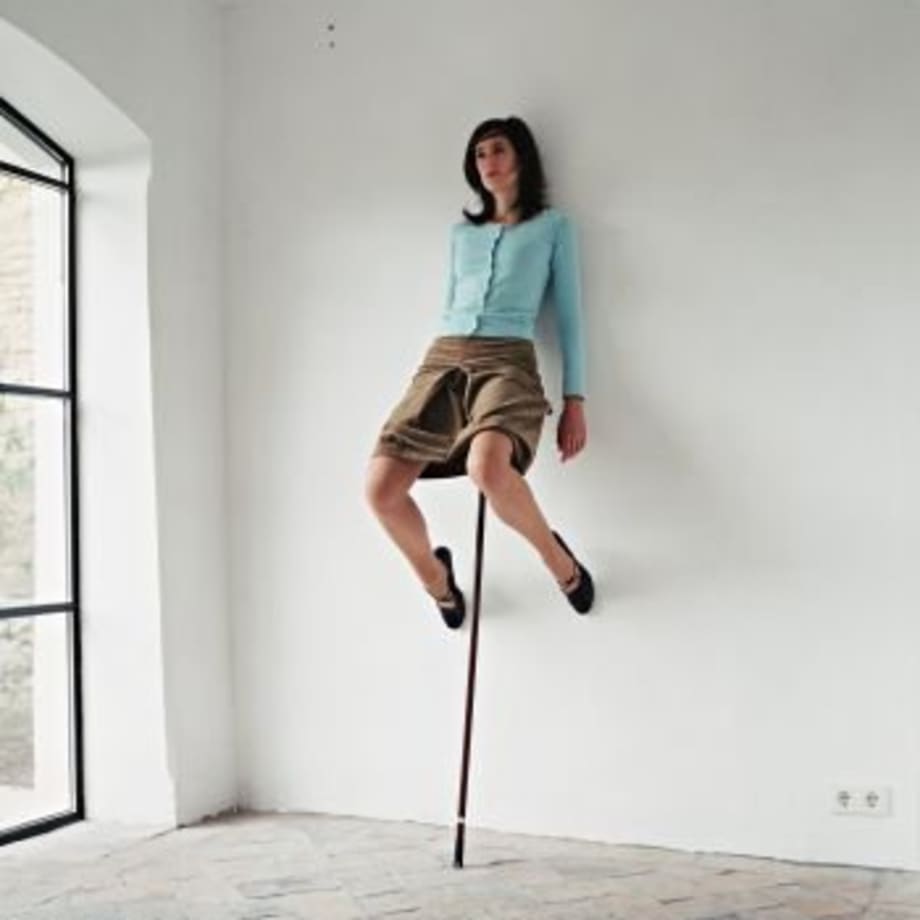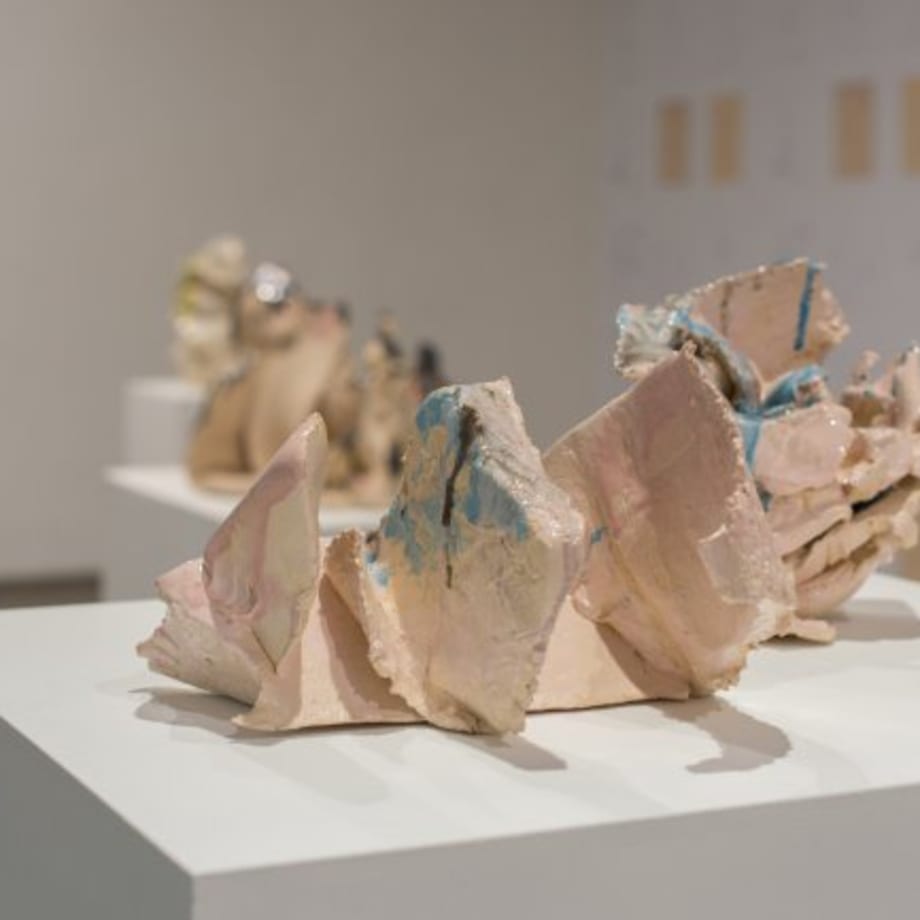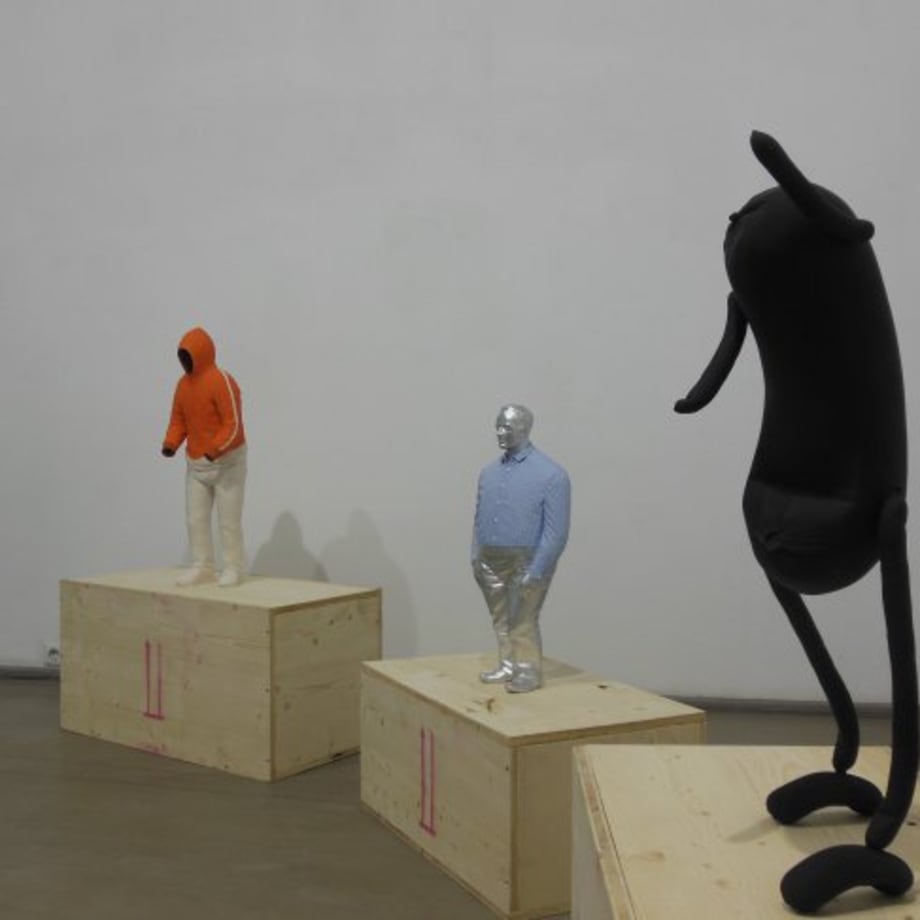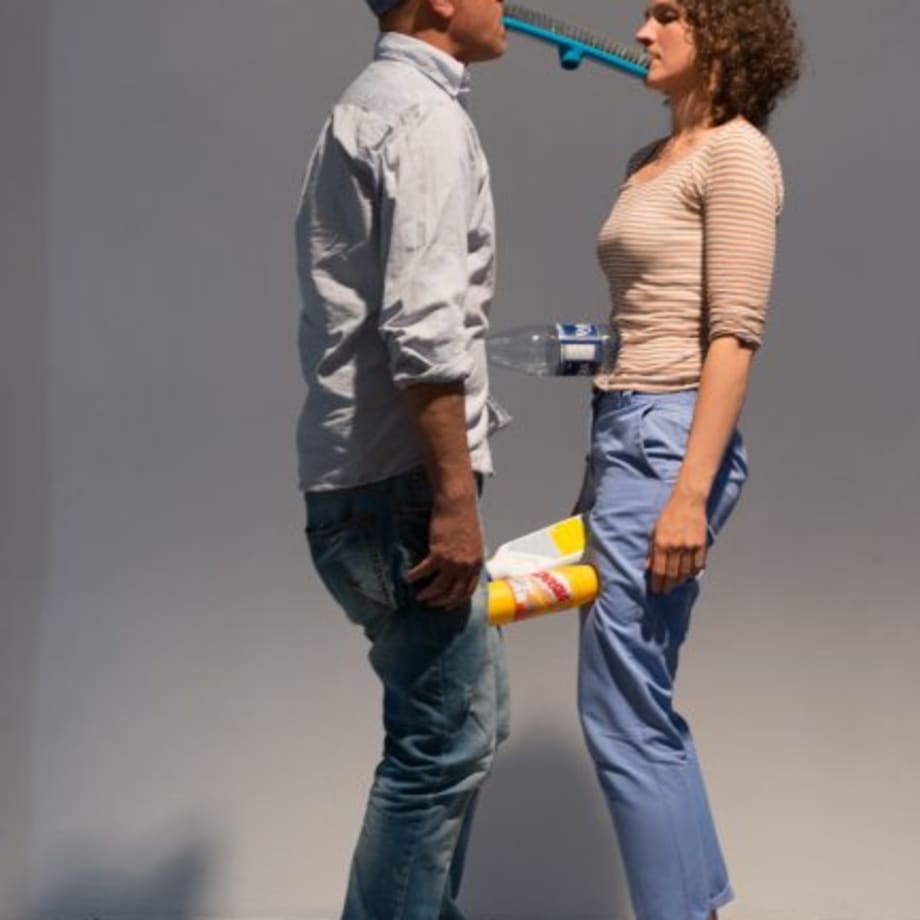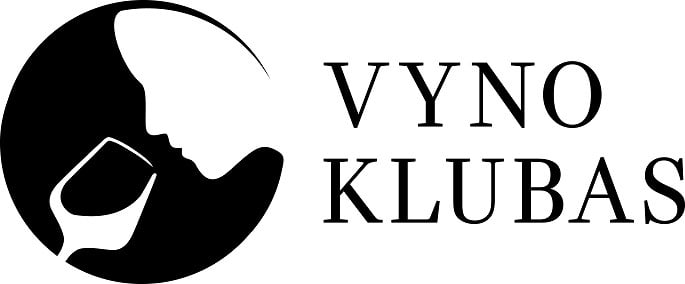Erwin Wurm: INTERPRETATION
A radical change marked the artist’s work in the early 1990s. Even before that, his ''dust display cases''–time-based sculptures which echo Duchamp’s'dustbins'and 'water buckets'–had ceased to pose as sculptures. The fingers went up, making the 'V-for-victory'sign.Wurm replaces his dust sculptures with 'human sculptures', limited to one minute in duration. From now on, sculpture learns to blush as if standing naked in front ofinterpretation. Targeting narrow-minded academicism, the artist nevertheless allowed his sculpturesto mockingly waylayus.
Viewers, who can insert themselvesin awork at any moment, experiences a profoundpsychological effect. First of all, this affects the individuals who using their minutes voluntarily shapea figure outside of their habitual mode of conduct. They become a part of the work and its particularity. This interplay between alienation and ephemeral ''self-transgressive'identity informs the whole of Erwin Wurm’s oeuvre.
Patron
Vilnius City Municipality
Exhibition supported by
Lithuanian Council for Culture, LRT Culture, Mabre Residence Hotel, Dione, ZAG Consulting
Wine of the exhibition
Jacob’s Creek
Gallery sponsored by
Lietuvos Rytas daily, Ekskomisarų Biuras SecurityServices, city-info.net
Special thanks to
Romas Kinka
Galerija Vartai is pleased to announce the opening of the exhibition Interpretationby Erwin Wurm,one of the world’s most renowned artists. This is Wurm’s second solo show at Vartai, curated by the Vienna-based curator Amer Abbas. At the same time, another exhibition by Wurm will open at the Contemporary Art Centre, where a massive architectural object titled Narrow Housewill be installed. Viewers are invitedto visit both of the artist'sexhibitions.
A radical change marked the artist’s work in the early 1990s. Even before that, his ''dust display cases''–time-based sculptures which echo Duchamp’s'dustbins'and 'water buckets'–had ceased to pose as sculptures. The fingers went up, making the 'V-for-victory'sign.Wurm replaces his dust sculptures with 'human sculptures', limited to one minute in duration. From now on, sculpture learns to blush as if standing naked in front ofinterpretation. Targeting narrow-minded academicism, the artist nevertheless allowed his sculpturesto mockingly waylayus.
Viewers, who can insert themselvesin awork at any moment, experiences a profoundpsychological effect. First of all, this affects the individuals who using their minutes voluntarily shapea figure outside of their habitual mode of conduct. They become a part of the work and its particularity. This interplay between alienation and ephemeral ''self-transgressive'identity informs the whole of Erwin Wurm’s oeuvre.
The 'one-minute sculptures'onoutdoor billboards are perceived not as a mediated intervention into public space, but rather as a 'life act', a narration, a new structuring of the 'incidental'. The invisible magical staging becomes a part of our present and creates a 'stage'.Even the so-called objects in this exhibition –the 'cucumber graces'and rampant sausages, broken refrigerators, basic furniture items turned into design objects and, not least, the archaicnatureof shatteredclay shards–all emerge out of play. This entourage sometimes evades 'acting'and for a while each sits on its own pedestal.
The work of Erwin Wurm (b. 1954) is well-known on the international contemporary art scene. The artist has held numerous solo exhibitions in venues like the Städel Museum in Frankfurt and the Lehmbruck Museum in Duisburg (2014), the Museum of Contemporary Art in Krakow, Winzavod, the Contemporary Art Centre in Moscow (2013), the Albertina Museum in Vienna, and the Contemporary Art Centre in Málaga (2012). Works by Erwin Wurmare included in the collections of the Albertina Museum in Vienna, the Louisiana Museum of Modern Art in Humlebæk, the Pompidou Centre in Paris, the Nomas Foundation in Rome, the National Museum of Art in Osaka, the Walker Art Center in Minneapolis, theMuseo de Arte Carrillo Gil, San Ángel in Mexico, and other institutions.


